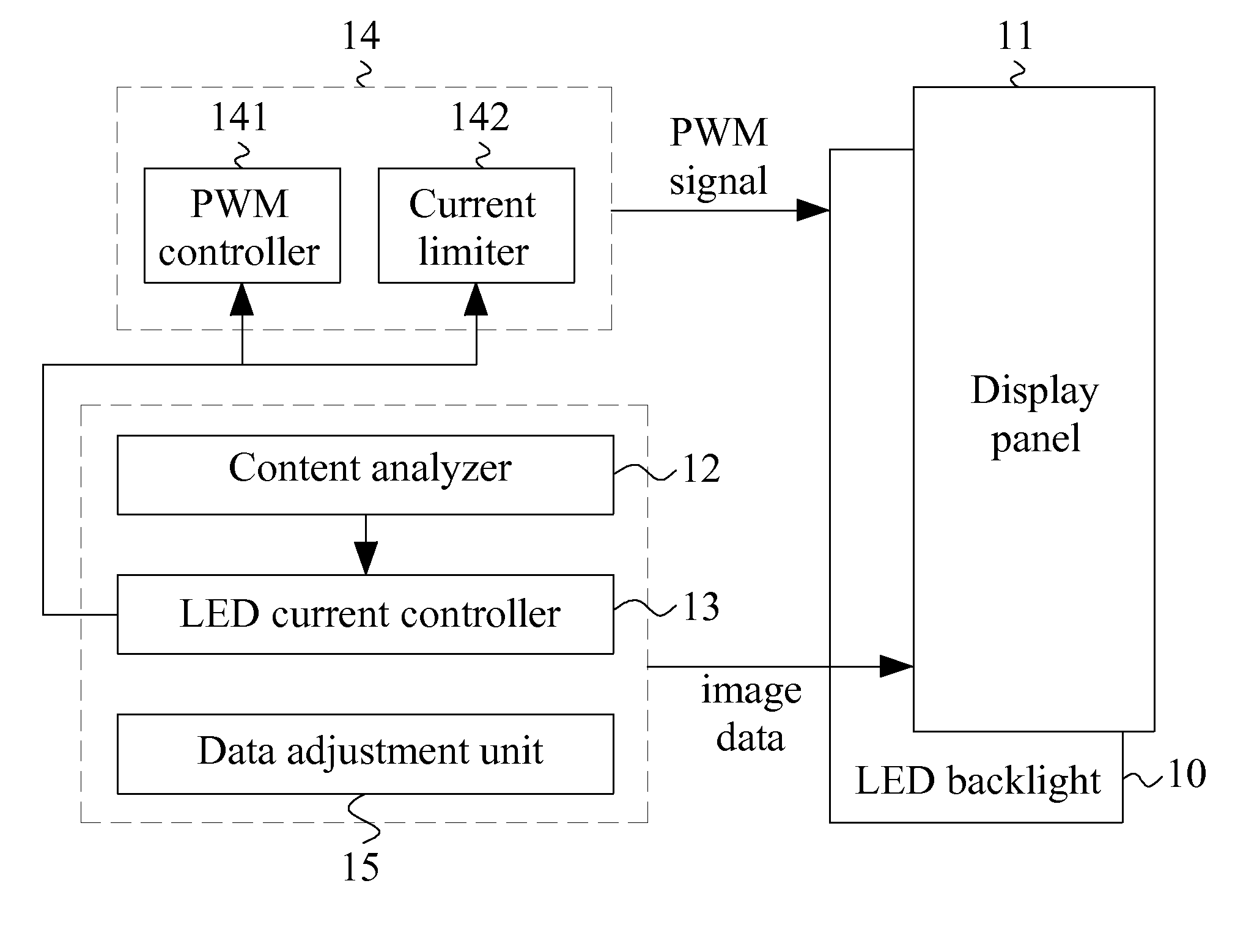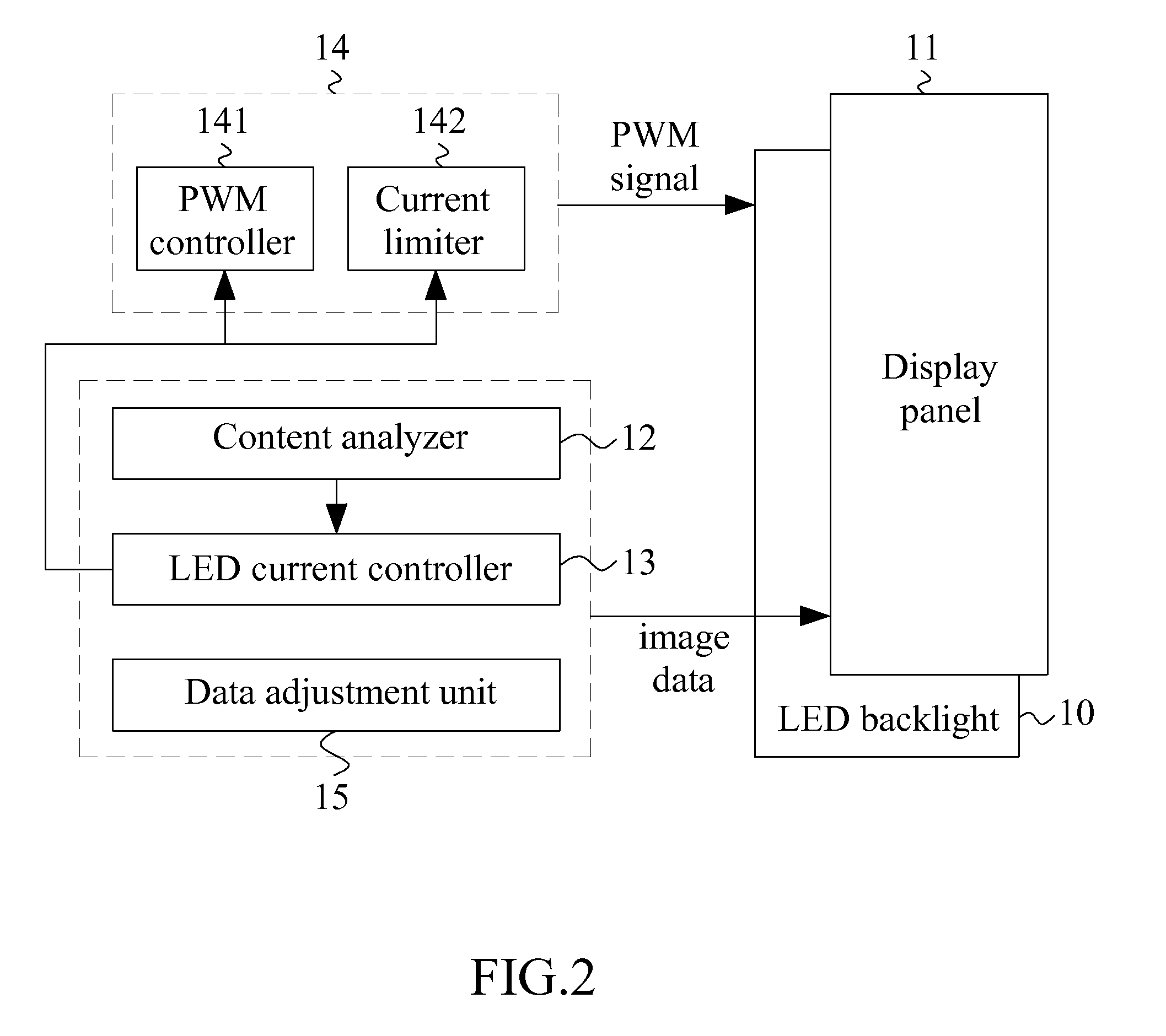System and a method of adaptively controlling an LED backlight
- Summary
- Abstract
- Description
- Claims
- Application Information
AI Technical Summary
Benefits of technology
Problems solved by technology
Method used
Image
Examples
first embodiment
[0022]FIG. 2 shows a block diagram illustrating a system of adaptively controlling a light-emitting diode (LED) backlight 10 according to the present invention. The system of the embodiment may be adapted to a display panel 11, such as a liquid crystal display (LCD) panel, which is illuminated by the LED backlight 10.
[0023]In the embodiment, a content analyzer 12 is configured to analyze characteristics (e.g., luminance) of image data to be displayed on the display panel 11. Based on an analysis result of the content analyzer 12, an LED current controller 13 accordingly controls illumination of the LED backlight 10 via an LED driver (board) 14 that is used to drive the LED backlight 10. Specifically, the LED driver 14 includes a pulse-width-modulation (PWM) controller 141, which determines a duty cycle (of a PWM signal) during which the LEDs of the LED backlight 10 are turned on and thus illuminate the display panel 11. Accordingly, a PWM signal with a larger duty cycle allows more ...
second embodiment
[0028]With another aspect of the embodiment, some schemes of protecting LEDs of an over-driven LED backlight 10 from overheating are proposed. FIG. 4 shows a block diagram illustrating a partial system of adaptively controlling an LED backlight 10 according to the present invention. In the embodiment, a temperature estimate unit 16 is configured to estimate a temperature of an over-driven LED backlight 10, for example, according to the duty cycle of the PWM signal and time lapsed during over-driving as recorded by an over-drive timer 17. When the estimated temperature reaches a high temperature limit, indicating that excessively heat has been generated, the over-drive mode may be temporarily turned off (that is, a normal current is resumed instead), or the over-drive current is temporarily reduced.
third embodiment
[0029]FIG. 5 shows a block diagram illustrating a system of adaptively controlling an LED backlight 10 according to the present invention. In the embodiment, a temperature sensor 18 is used to detect a temperature of an over-driven LED backlight 10. In case that the detected temperature is higher than a predetermined temperature threshold value, the over-drive current is temporarily reduced, for example, by reducing the duty cycle of the PWM signal.
PUM
 Login to View More
Login to View More Abstract
Description
Claims
Application Information
 Login to View More
Login to View More - R&D
- Intellectual Property
- Life Sciences
- Materials
- Tech Scout
- Unparalleled Data Quality
- Higher Quality Content
- 60% Fewer Hallucinations
Browse by: Latest US Patents, China's latest patents, Technical Efficacy Thesaurus, Application Domain, Technology Topic, Popular Technical Reports.
© 2025 PatSnap. All rights reserved.Legal|Privacy policy|Modern Slavery Act Transparency Statement|Sitemap|About US| Contact US: help@patsnap.com



